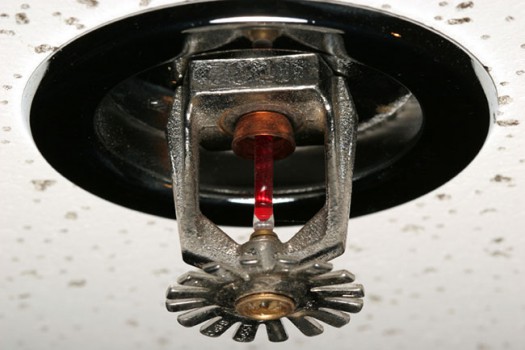NSW Planning simplifies fire sprinkler regulations for aged care
Aged care providers in NSW have welcomed the State Government’s efforts to simplify and streamline the process of retrofitting compulsory fire sprinkler safety systems in residential facilities.
The changes to the regulations introduced by the government give providers more flexibility to meet standards in non-residential areas of a facility by eliminating the need to install sprinklers if other conditions are met. They also remove the requirement for operators to publish fire system implementation costs.
State laws require all NSW residential aged care facilities to have an automatic sprinkler system installed by March 2016. While the NSW Government reported in January that the majority of facilities were on track to meet the deadline, aged care peaks said at the time that some providers would have trouble meeting the government’s timetable.
Responding to the regulatory changes, Illana Halliday, CEO of Aged & Community Services NSW & ACT said: “This is a considerable improvement and we welcome it.”
Ms Halliday said the sector had been asking for the changes and they welcomed the government’s cooperation. “The aged care industry is delighted that the department has been so open and constructive in working with us to refine some of the requirements so that we are able to be more practical and economical in the sprinkler installation projects,” Ms Halliday said.
Department of Planning and Infrastructure deputy director general Jill Reich said that all residential living quarters must still be fire sprinkler protected, but flexibility in other areas would assist the remaining facilities meet installation deadlines.
“Provided that non-residential areas, such as offices, that are situated under a sprinkler-protected resident area have in place suitable fire and smoke barriers and smoke detection, operators have the option of not installing further fire sprinklers in them.
“Non-residential areas that are below a resident area that is assessed as high fire hazard, for example car parks, will always require sprinklers,” Ms Reich said.
Fire and Rescue NSW added its support to the changes and confirmed the amendments would not compromise safety.
As part of the regulatory change, and in a bid to prevent price setting by suppliers, providers will no longer have to publish the cost of fire protection measures on the department’s website.
However, providers will still need to supply the installation costs to the independent committee overseeing the installation of sprinklers in aged care homes, Ms Reich said.
For more information on these amendments go to: Fire safety in aged care facilities
Elsewhere, Ms Halliday said amendments to the state’s complying development code, which come into effect on 22 February, would further “cut through red tape, time and money” and assist providers with installing sprinkler systems as well as other fire safety works.
In a letter to Ms Halliday, accredited certifier David Blackett of construction industry consultants Blackett Maguire + Goldsmith, said the forthcoming changes meant various internal alterations to fire safety systems, as well as other internal building works within an existing aged care facility could be approved as a complying development and not require a DA (development application).
This article was originally published in Australian Ageing Agenda.

No comments:
Post a Comment